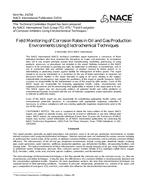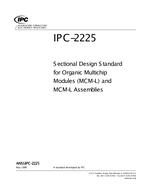
NACE 31014
Original price was: $79.00.$47.00Current price is: $47.00.
Field Monitoring of Corrosion Rates in Oil and Gas Production Environments Using Electrochemical Techniques
| Published by | Publication Date | Number of Pages |
| NACE | 11/01/2014 | 28 |
NACE 31014 – Field Monitoring of Corrosion Rates in Oil and Gas Production Environments Using Electrochemical Techniques
This report provides generally accepted procedures and practices used in oil and gas production environments to monitor internal corrosion rates using electrochemical techniques. Internal corrosion rates are monitored for various reasons including to understand the current status of the system, to optimize corrosion inhibitor concentration, and to estimate corrosion inhibitor efficiency. The infrastructures of the oil and gas production environments include casing pipe, downhole tubular, acidizing pipe, water generators, water injectors, wellhead, production pipelines, gas dehydration facilities, oil-separating facilities, and storage tanks. The typical environments of these infrastructures consist of varying amounts of oil, gas, water (formation water or production water), temperature, pressure, flow, corrosive species (carbon dioxide [CO2], hydrogen sulfide [H2S], oxygen [O2]), microbes, solids, acetic acid, and ionic species (sulfates, carbonates, and bicarbonates).The main advantage of electrochemical techniques is that they provide the corrosion rate as the corrosion occurs, i.e., they are instantaneous and online techniques. Using the data, the effectiveness of a corrosion inhibitor is instantaneously obtained and the concentration optimized readily. However, for more quantitative analysis, the data from electrochemical techniques are analyzed based on field operating conditions. Variations in pressure, temperature, production (i.e., volume of oil, water, and gas), composition of acid gases (CO2 and H2S), and solids also influence the electrochemical measurements.
This report provides guidance for using electrochemical techniques to evaluate the performance of corrosion inhibitors in oil and gas production environments. It summarizes the specific areas where these techniques excel as well as those areas where their use is limited in the field. The data from the electrochemical monitoring techniques is used to identify corrosion mechanisms and/or trends that will aid in selecting effective inhibitors and optimizing their concentrations (or application frequency) within a system.
Product Details
- Published:
- 11/01/2014
- Number of Pages:
- 28
- File Size:
- 1 file , 920 KB
- Note:
- This product is unavailable in Ukraine, Russia, Belarus




